This week, COVID cases are on the decline in most places in the U.S. But a new variant called HV.1 is growing faster than other circulating variants. Fortunately, the new XBB.1.5 Fall vaccines should work against HV.1. To find a COVID vaccine near you, search at vaccines.gov.
COVID hospitalizations and emergency room visits continue to decrease. According to the CDC, an equal number of babies aged 0 to 1 years are starting to come into the emergency departments with RSV as often as they are for COVID infections. Fortunately, emergency department visits are declining for all age groups for COVID infections.
The CDC’s map of wastewater SARS-CoV-2 shows that there are high levels of virus in the Northeastern United States, especially in New York State, New Jersey, and in Philadelphia. There may be a slight delay in wastewater reporting this week because the CDC has changed their vendor for viral wastewater reporting from Biobot to Alphabet’s Verily.
New variants and FLip mutations
Raj Rajnarayanan coined the term FLip mutations for the combination of L455F and F456L mutations in the SARS-CoV-2 spike protein. FLip represents a switch of two amino acids on the spike protein labeled F and L. These adjacent mutations lie in the spike protein at the 455 and 456 positions. One mutation flips from F to L and the other from L to F. Together, these mutations cause the SARS-CoV-2 spike protein to bind our ACE2 receptors more strongly which allows the virus to infect more easily. The FLip mutation combination evades our immunity more because our antibodies are less able to neutralize the mutated spike protein. The FLip mutations are considered a consequence of widespread use of monoclonal antibodies to treat COVID infections.
J. Weiland’s latest modeling predicts that the HV.1 variant and FLip variants like HK.3 will cause increases in COVID cases in late November or December after a nadir around November 1st. Early FLip mutations like DV and GK variants were weaker and didn’t cause many COVID infections. However, the new HK.3 variant (EG.5.1 with an added FLip mutation) is growing much faster than other variants as seen by a >50% growth rate of HK.3 in Singapore and China. Like EG.5.1, HK.3 is a descendent of XBB, so the new vaccines should help protect against it.
This week, the protein based Novavax vaccine started to be rolled out to some pharmacies. Katelyn Jetelina wrote an article about Novavax answering many questions that you may have.
The Department of Health and Human Services (HHS) awarded more than $500 million to study new types of COVID vaccines. A Mount Sinai-affiliated company called CastleVax was awarded $8.5 million to develop their nasal vaccine and Codagenix was awarded $10 million also for a intranasal COVID vaccine. Nasal vaccines can cause better immunity in the nose which can stop the virus from entering the body. As part of Project NextGen, BARDA awarded $100 million to Luminary Labs for two competitions focused on the development of patches for vaccine delivery and on reducing the number of vaccine doses needed for a good immune response. BARDA is also awarding more than $240 million to Project NextGen for cold-chain sample management, genomic sequencing and increased laboratory capacity for viral testing.
Using a new artificial intelligence platform called EVEscape, scientists were able to predict the evolution of SARS-CoV-2 virus mutations using data from before 2020. This type of predictive AI can help experts to make vaccines for variants of concern before they occur. EVEscape can also be used to predict mutations for other viruses such as influenza, HIV and viruses with pandemic potential such as Lassa and Nipah viruses.
A meta-analysis of 28 randomized controlled trials of medications used to treat severe COVID infections showed that there were significant mortality benefits for Remdesivir, Tocilizumab (for IL-6 blockade) and Baricitinib use. Overall, Tocilizumab was found to be the most effective treatment for severe COVID because it reduced both the need for mechanical ventilation and it decreased severe COVID deaths the most of the drugs studied.
There have been at least 4 studies showing an increased risk of autoimmune disorders after COVID infection. A new study from Korea looking at 355,000 people who had COVID compared to 6.1 million people who did not showed that those who had COVID had 12% to 74% higher odds for different types of alopecia (major hair loss either in patches or complete hair loss), a 3-fold increased risk for a type of vasculitis (antineutrophil cytoplasmic antibody–associated vasculitis), 68% higher odds for Crohn's disease and 59% higher chance of Sarcoidosis. The severity of the COVID infection, as well as being unvaccinated, increased the odds of developing these autoimmune diseases.
Babies and children
Compared with adults, young babies mount a weaker antibody response to COVID infection that lasts a long time- at least 300 days. But babies have unusually strong immune responses in their noses which can stop the virus from entering the body and can lead to milder infections. A CDC report looking at Long COVID risks in children showed that in a 2022 survey, 1.3% of children ever had Long COVID and 0.5% currently had Long COVID and had not recovered. Long COVID was higher in girls than boys, older compared with younger children, and Hispanic kids compared with Asian or Black children. Although 0.5% is a small number, Long COVID can be devastating to a child making it hard for them to get a basic education.
Long COVID
A new study from the UK shows that both people with Long COVID and those with long term Myalgic Encephalomyelitis/Chronic Fatigue Syndrome (ME/CFS) have abnormally low levels of flow-mediated dilation (FMD) of their brachial artery as compared to healthy age-matched controls. Similar levels of endothelial dysfunction was found for both Long COVID and the ME/CFS group despite the people with ME/CFS being ill for about 15 years more than Long COVID patients. The abnormal vascular findings may increase the risk of cardiovascular disease for both groups by about 50 percent. On Twitter, author Dr. Lawrence Hayes commented “Our findings suggest a potential link between endothelial dysfunction, microclot formation, and persistent symptoms. This could open avenues for targeted interventions for those affected by post-viral illnesses in people with ME and those with Long COVID.”
Many people with Long COVID have cognitive impairments and difficulties speaking or finding words. A follow-up study by Louise Cummings looking at cognitive-linguistic difficulties in adults with Long COVID showed that they often have difficulties in immediate and delayed verbal recall. She recommends speech-language pathology services and occupational therapy if people with Long COVID plan on returning to work.
Three case reports of complete remission of Long COVID cognitive issues (brain fog) and/or profound fatigue within a week after receiving monoclonal antibody (MCA) treatment of Regeneron (casirivimab/imdevimab) were presented by a physician from the Florida Department of Health in the American Journal of Emergency Medicine. The patients all had COVID infections before Delta and Omicron variants became dominant. This was not a randomized trial and the authors recommended future RCTs to see if using monoclonal antibodies could treat some forms of Long COVID. UCSF is recruiting Long COVID patients now for a small clinical trial using the monoclonal antibody AER002 to try to rid the body of viral reservoirs of SARS-CoV-2 which may be causing Long COVID. This seems very reasonable since Drs.Iwasaki and Putrino’s recent study showed that people with Long COVID have increased IgG antibodies to the SARS-CoV-2 spike protein and they also have increased activated B cells and exhausted T cells which may point to a reservoir of SARS-CoV-2 virus somewhere in the body.
In non-COVID news, not only did Katalin Karikó recently win the Nobel Prize for her work on mRNA vaccines, she also raised a daughter who is a two-time Olympic gold medalist. Artificial intelligence (AI) uses supercomputers which have both a very high energy use and also require a lot of water to cool them. As we start to use AI more, we will have to find solutions for these issues.
Obesity before and during pregnancy is a predictor of adverse pregnancy outcomes and is also associated with heart disease in the pregnant person later in life. Regarding infertility, an Australian study shows that there is a small increased risk for genitourinary abnormalities in babies conceived with IVF, particularly after ICSI. The authors recommend that ICSI should be avoided in couples without male infertility. Maternal Pertussis vaccination during pregnancy was found to be 70% effective in infants younger than 2 months of age, but waned to 43% effectiveness against Pertussis by 7 to 8 months of age. A pilot study shows that 30% of fathers screened had postpartum depression (PPD). “Paternal PPD is a risk factor for worsened quality of life, poor physical and mental health, and developmental and relational harms in the father-mother-child triad.” Therefore, pediatricians and postpartum clinics may consider adding postpartum depression screening for both parents.
The Albuquerque International Balloon Fiesta recently brought colorful balloons and cartoon characters to the New Mexico sky. Some 550 balloons take part every year in the Balloon Fiesta.
Have a great rest of your weekend,
Ruth Ann Crystal MD
COVID news:
Walgreens positivity rate: https://www.walgreens.com/businesssolutions/covid-19-index.jsp
US Variant tracker: https://covid.cdc.gov/covid-data-tracker/#variant-proportions
HV.1 is taking off with the most growth advantage of the circulating variants.
The new XBB.1.5 vaccines should work against HV.1.
Variants in diff locations (globally): https://outbreak.info/
CDC COVID data tracker: https://covid.cdc.gov/covid-data-tracker/index.html#datatracker-home
CDC COVID Hospitalizations (blue) and Emergency Room (orange) visits tracker: https://covid.cdc.gov/covid-data-tracker/index.html#trends_weeklyhospitaladmissions_7dayeddiagnosed_00
Weekly ED visits for respiratory illnesses, by age and disease: https://www.cdc.gov/ncird/surveillance/respiratory-illnesses/index.html
All ages:
For Babies age 0 to 1 year old, RSV (purple) is starting to increase above COVID infections
US Wastewater Monitoring:
CDC Wastewater Monitor https://covid.cdc.gov/covid-data-tracker/#wastewater-surveillance
Wastewater from NWSS and Biobot in a US
Biobot wastewater: https://biobot.io/data/
California wastewater level updates:
–Wastewater SCAN: https://data.wastewaterscan.org/
California statewide view https://buff.ly/3YObiul
Sewer Coronavirus Alert Network (SCAN) project by Stanford University:
JP Weiland: https://twitter.com/JPWeiland
10/12/23 @JPWeiland tweets
"Note the slight increase in speed of HK.3 and HV.1 model since my last update. Confidence is growing in their speed. No matter where I look, HK.3 looks quite fast. It maintains ~50% growth rate past 50% in both Singapore and China.
"HK.3 looks about 10% faster than BA.2.86 Pirola.
However, JN.1, the Pirola with the strong escape mutation, is going to definitely boost it.
I think JN.1 Pirola will be clearly the fastest variant. It's displacing vanilla Pirola quickly in France."
FLip mutations:
8/16/23 BMJ: Covid-19: Infections climb globally as EG.5 variant gains ground https://buff.ly/3RWtRuQ.
The L455F and F456L mutations are nicknamed FLip mutations because they switch the positions of two amino acids on the spike protein labeled F and L. These mutations were predicted months ago as a likely consequence of the widespread use of monoclonal antibodies to treat covid.
8/6/23 Eric Topol MD: The Virus is Learning New Tricks and We Humans Keep Falling Behind https://buff.ly/44XFPbk
“There are 2 adjacent mutations in the spike 455 and 456 positions that are showing the virus has learned a new trick. It’s being called a FLip because both mutations are between F and L: one L to F, the other F to L, such that it really is deserving of the name!, thanks to Raj Rajnarayanan for coming up with it). Together, but not alone, the spike binds more avidly to ACE2, the cell receptor for the virus (the lower the Y-axis, -logKd the tighter the binding).
This FLip combo mutation also leads to further reduction of neutralizing antibodies.”
10/13/23 CNN: HHS awards more than $500 million to study Covid-19 vaccine nasal sprays and more https://buff.ly/3RYLJ8q
Nasal vaccines from Mount Sinai-affiliated company CastleVax, which was awarded $8.5 million and Codagenix, which was awarded $10 million.
Gritstone Bio was awarded $10 million for their self-amplifying mRNA vaccine candidate.
As part of Project NextGen, BARDA awarded $100 million to Luminary Labs to administer two competitions focused on the development of patches for vaccine delivery and reducing the number of vaccine doses needed for an effective immune response.
BARDA is also awarding more than $240 million toward Project NextGen studies, including cold-chain sample management, genomic sequencing and increased laboratory capacity for testing.
10/11/23 American Journal of Medicine (UK): People With Long COVID and Myalgic Encephalomyelitis/Chronic Fatigue Syndrome (ME/CFS) Exhibit Similarly Impaired Vascular Function https://www.amjmed.com/article/S0002-9343(23)00609-5/fulltext#%20
51 participants (17 Long COVID patients, 17 ME/CFS patients, and 17 healthy age-matched controls).
Long COVID and ME/CFS have similarly low flow-mediated dilation (FMD) and endothelial dysfunction compared to healthy age-matched controls, despite significantly longer illness duration in the ME/CFS group (15 years more).
FMD findings:
Long COVID 6.99 ± 4.33%,
ME/CFS 6.60 ± 3.48%
Healthy 11.30 ± 4.44%
Reduced flow-mediated dilation has been associated with increased cardiovascular risk, including hypertension, atherosclerosis, and endothelial dysfunction. The data indicates a 50% increased cardiovascular risk for people with Long COVID and ME/CFS.
Individuals with post-viral illnesses should be monitored and treated for CV risk and treated as needed.
Figure 1: Baseline diameter of brachial artery (cm; A) and percentage change of brachial artery diameter upon cuff deflation in relation to baseline diameter (B). Data presented are mean ± SD, with individual data points displayed. Long COVID (n =17, 13 females, 4 males), ME/CFS, (n=17, 10 females, 7 males), Controls (n=17, 10 females, 7 males).
10/12/23 Author Dr. Lawrence Hayes tweet on this paper:
“In this paper we reported pwME, pwLC, and healthy controls had similar baseline brachial artery diameter. However, using flow mediated dilation (FMD; stopping blood flow using a BP cuff, and then releasing the BP cuff), controls' artery dilated to a greater % than pwME and pwLC.
“Our findings suggest a potential link between endothelial dysfunction, microclot formation, and persistent symptoms. This could open avenues for targeted interventions for those affected by post-viral illnesses in #pwME and #LongCovid.
10/11/23 Nature: Learning from prepandemic data to forecast viral escape https://buff.ly/48MM0kO
Predicting SARS-CoV-2 virus evolution, immune escape and emerging strains using A.I. called EVEscape to help prepare future vaccines.
EVEscape could be used to predict mutations in influenza, HIV and understudied viruses with pandemic potential such as Lassa and Nipah.
10/10/23 Nature Sci Reports: Assessment of the available therapeutic approaches for severe COVID-19: a meta-analysis of randomized controlled trials https://buff.ly/3RUYuRe
Meta analysis of 28 RCTs for severe COVID treatment with anakinra, remdesivir, baricitinib, ivermectin, ritonavir, tocilizumab, sarilumab, sotrovimab, casirivimab/imdevimab.
Statistically significant mortality benefits with:
Remdesivir (both in the comparison to standard of care (SoC) and placebo,
Tocilizumab for IL-6 blockade (compared to SoC), and
Baricitinib (compared to placebo).
“Considering the statistical aspect of our study, due to the statistical significance and heterogeneity values, Tocilizumab was the best given the number of deaths, number of patients needing mechanical ventilation, and number of patients discharged from the hospital compared to SoC.”
Tocilizumab was the best treatment given the number of deaths, number of patients needing mechanical ventilation, and number of patients discharged from the hospital compared to SoC.”
10/9/23 Katelyn Jetelina: Novavax is here! https://buff.ly/46sN7ER
10/4/23 American Journal of Emergency Medicine (Florida Department of Health and others): Pathophysiology and potential treatment of Long COVID: A report of signal index cases and call for targeted research https://buff.ly/3QaOZez
Pre-proof that has been peer reviewed.
3 cases of complete remission of Long COVID cognitive issues (brain fog) and/or profound fatigue within a week after receiving monoclonal antibody (MCA) treatment of Regeneron (casirivimab/imdevimab) because they were exposed to, or had a new COVID infection. Two years later, the 3 patients did not have recurrence of Long COVID.
The COVID cases were pre-Delta/pre-Omicron and involved a specific MCA formulation.
Authors hypothesis: “Long COVID CFS could be a persistent low-grade endothelialitis complicated by maladapting imbalances in complex immune responses and resulting multi-organ mitochondrial dysfunction [Appendix A].”
Figure 1: Total long COVID symptom scores, prior to COVID, during the long COVID phase, after vaccination, and after infusion of monoclonal antibodies (MCA).
What Severe Long COVID is like:
10/8/23 NBC: People who’ve had Covid at least 5 times describe how the illness changed with each reinfection https://t.co/aoUmh0xWRJ
Interview of 5 people who have had COVID at least 5 times.
Some have less symptoms with each infection, some have much worse including shortness of breath, new onset diabetes and new kidney disease.
At least 10% of cases lead to Long COVID.
The isolation required also takes a mental toll, they said.
10/6/23 JAMA (Korea): Autoimmune and Autoinflammatory Connective Tissue Disorders Following COVID-19 https://buff.ly/46PLmkR
355,000 people with Covid and 6.1 million controls in South Korea
Higher risk in people who had COVID:
Alopecia areata (adjusted hazard ratio [aHR], 1.12),
Alopecia totalis (aHR, 1.74),
Antineutrophil cytoplasmic antibody–associated vasculitis (aHR, 2.76),
Crohn disease (aHR, 1.68),
Sarcoidosis (aHR, 1.59).
COVID-19 patients had 12% to 74% higher odds for various types of alopecia (major hair loss), a 3x risk for a type of vasculitis, 68% higher odds for Crohn's and 59% higher odds for sarcoidosis.
The severity of the COVID infection, as well as being unvaccinated, increased the odds of developing these autoimmune diseases.
The risks of alopecia totalis, psoriasis, vitiligo, vasculitis, Crohn disease, ulcerative colitis, rheumatoid arthritis, adult-onset Still disease, Sjögren syndrome, ankylosing spondylitis, and sarcoidosis were associated with the severity of COVID-19.
Unvaccinated people had a higher risk for certain autoimmune diseases, including alopecia areata, alopecia totalis and Crohn's disease.
10/6/23 Dr Topol “This is now the 4th country report with consistent findings of increased risk of various autoimmune conditions associated with SARS-CoV-2 infections. Overlaps with a mechanism of Long Covid.”
4/2023 Eric Topol MD: The heightened risk of autoimmune diseases after Covid https://buff.ly/3oxnh1b
10/2/23 Language and Health (Louise Cummings): Cognitive-linguistic difficulties in adults with Long COVID: A follow-up study https://buff.ly/3toxXSh
n = 41 adults with Long COVID. Cognitive-linguistic skills evaluated.
Difficulties in immediate and delayed verbal recall persist and patients could benefit from speech-language pathology services and occupational health.
Factors that facilitate return to work in adults with Long COVID:
10/2/23 Nature: How the littlest children stop SARS-CoV-2 in its tracks https://buff.ly/3RTJZ09
Compared with adults, babies have a weaker antibody response that lasts almost a year, but babies have unusually strong immune responses in their noses which can stop the virus and lead to milder infections.
Refers to this study: 9/29/23 Cell: Multi-omics analysis of mucosal and systemic immunity to SARS-CoV-2 after birth https://buff.ly/3Pze0j4
9/26/23 CDC Stacks: Long COVID in Children: United States, 2022 https://buff.ly/3Qcv8N4
In 2022, 1.3% of children ever had Long COVID and 0.5% currently had Long COVID.
Ever having Long COVID was higher in girls than boys, older compared with younger children, and Hispanic compared with Asian or Black children.
9/12/23 CDC ACIP meeting on Long COVID https://buff.ly/3RroBzk
Other news:
9/19/23 BMC Pregnancy and Childbirth: Screening fathers for postpartum depression in a maternal-child health clinic: a program evaluation in a midwest urban academic medical center https://bmcpregnancychildbirth.biomedcentral.com/articles/10.1186/s12884-023-05966-y
10/8/23 NBC: Nobel Prize winner Katalin Karikó raised a two-time Olympic gold medalist: Here's her No. 1 piece of parenting advice https://buff.ly/3rDaYm5
9/9/23 AP: Artificial intelligence technology behind ChatGPT was built in Iowa — with a lot of water https://buff.ly/489CkjZ
“Microsoft, OpenAI and Google have acknowledged that growing demand for their AI tools carries hefty costs, from expensive semiconductors to an increase in water consumption to cool powerful supercomputers.
10/10/23 Joule: The growing energy footprint of artificial intelligence https://buff.ly/46AXar0
10/10/23 HealthDay: Maternal Pertussis Vaccination Linked to Lower Infection Risk in Infants https://buff.ly/48L6LgV
Effectiveness of maternal vaccination decreased from 70% among infants younger than 2 months to 43% in those aged 7 to 8 months.
10/10/23 Healio: Obesity before, during pregnancy leading cause of later heart disease https://buff.ly/3FdstfO
Early and prepregnancy BMI is a predictor of adverse pregnancy outcomes, which are associated with CVD risk.
10/10/23 Annals of Internal Medicine (Australia): Risk for Congenital Anomalies in Children Conceived With Medically Assisted Fertility Treatment: A Population-Based Cohort Study https://buff.ly/3LYzy7D
Patients should be counseled on the small increased risk for genitourinary abnormalities after ART, particularly after ICSI, which should be avoided in couples without problems of male infertility.
10/7/23 AP: Albuquerque International Balloon Fiesta brings colorful displays to the New Mexico sky https://buff.ly/3ZVLf4I



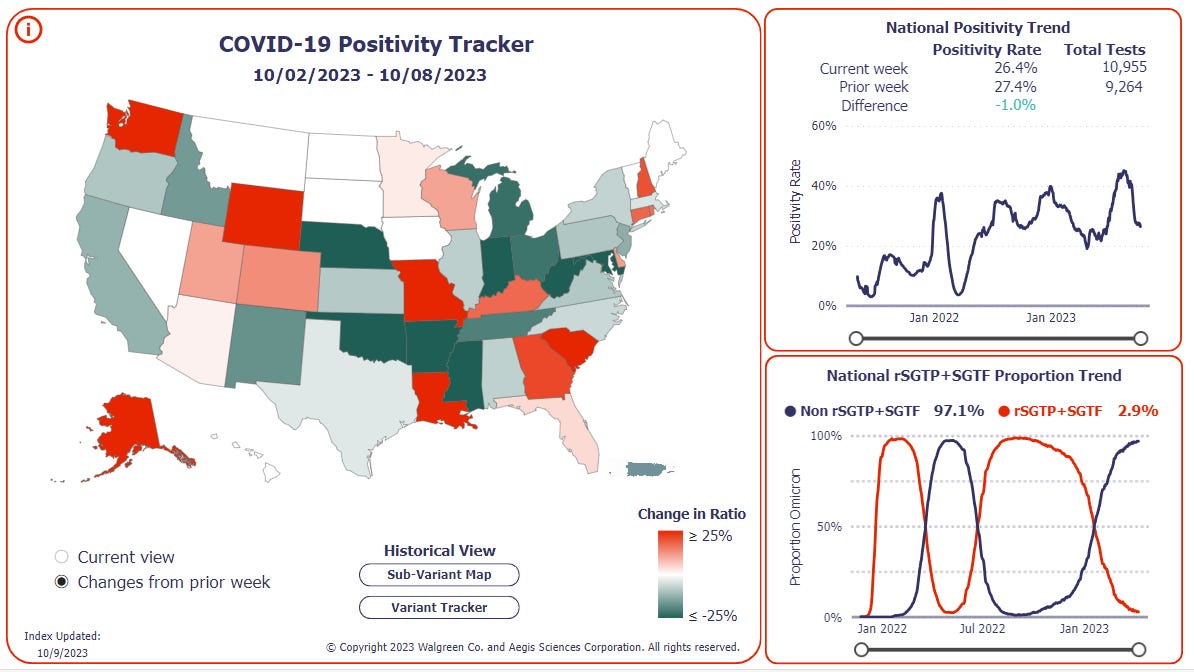






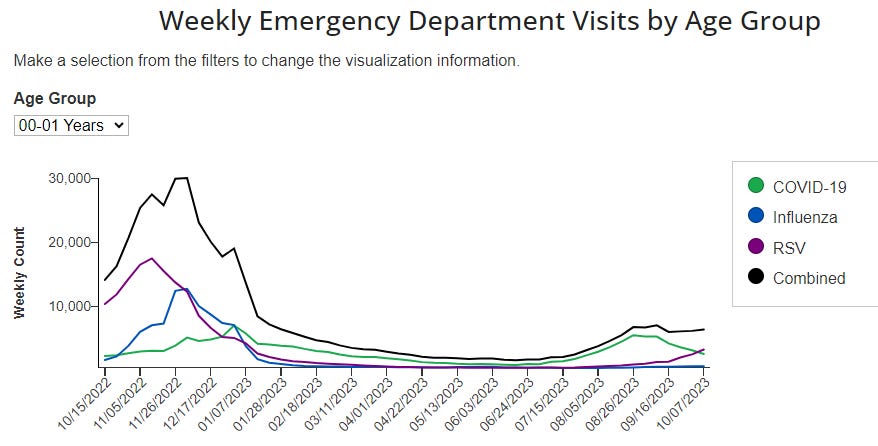

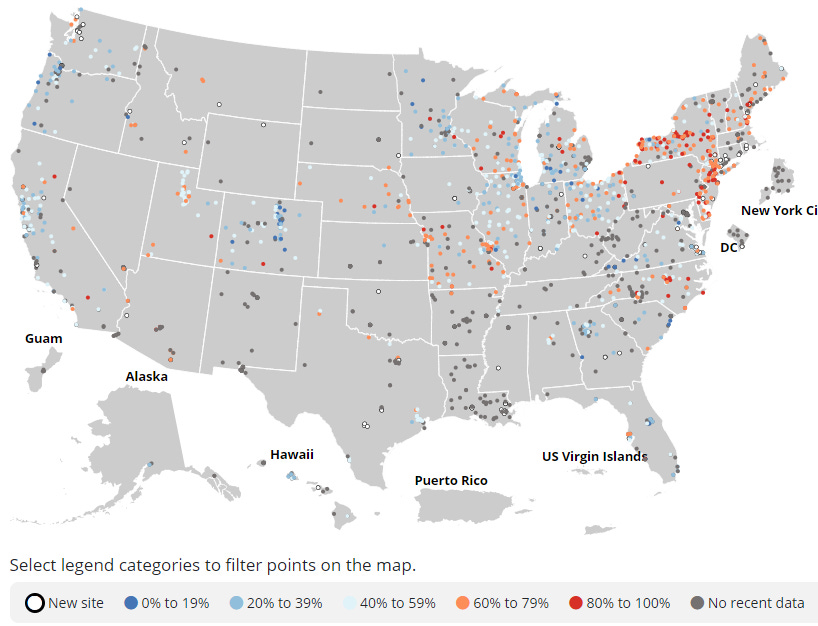





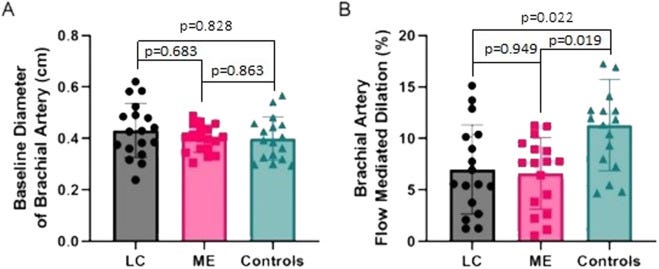



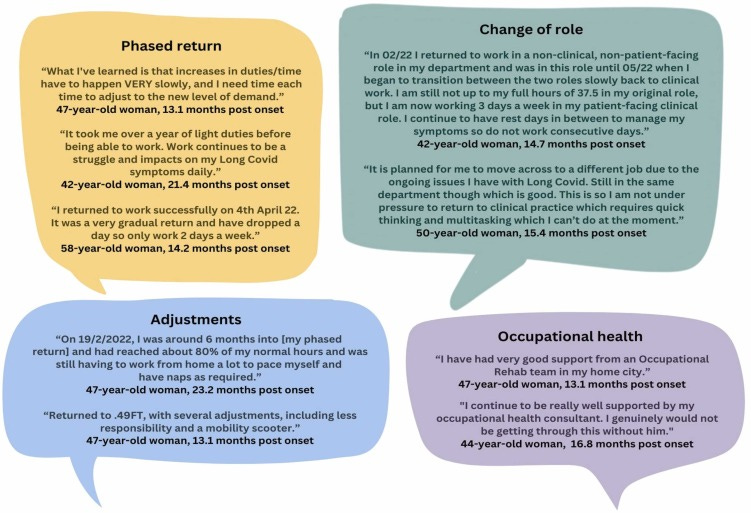






Yet again, I’m the first person to like and thank you. I’m on the look-out for your posts, because I appreciate them so much. As ever, thank you so much for the time and effort you give.